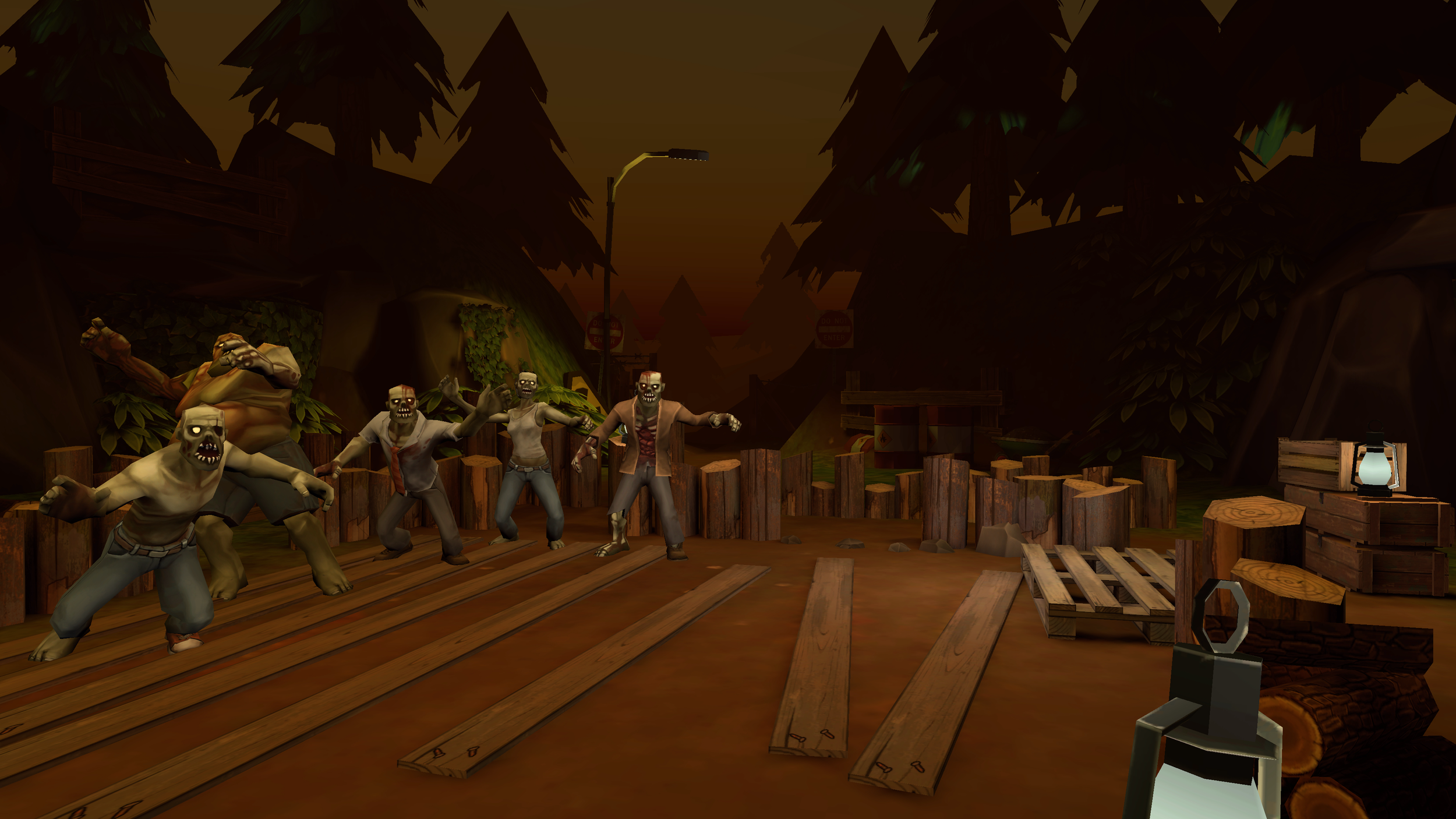
A Roguelike PvE shooter, focused on replayability and player lead decision making.
Year
2024
Company
Fennec Labs/Spawnpoint
My involvement
Acting game director / project co-ordinating
Core system design; combat system, perk/levelup systems and shop/economy.
Weapon / Enemy balancing
Boss / Special zombie design
Greyboxing / level design
Sourcing and working with asset pack
The goal of Dead Corps
The goal of Dead Corps, a Spawnpoint game, was to provide the visceral experience of eliminating increasingly challenging enemies using diverse methods. Honestly, the inherent joy of mowing down hordes of enemies is what drove most decisions I made.
The game was designed to be scalable and highly replayable, where extended play unlocks additional content. These were all core aspects of the Spawnpoint games I designed and produced.
The perk system
The perk system allowed players to select from a pool of perks before each wave, encouraging snap strategic decision-making and dynamic perk synergy combinations. For instance, one perk could increase damage based on ammo used which worked well with another that rewarded ammo for each headshot, promoting a playstyle where players focused more on accurate shots than rapid firing.
With 24 perks available, each playthrough offered a unique experience. This created a layer of player choice and gave them a way to customize their experience.
The economy
The in-game economy rewarded kills with currency, with headshots and special infected kills yielding higher rewards. Currency could be used to purchase guns or consumables like grenades. Players could purchase guns was via the vending machine which operated similarly to fast food self-service kiosks. I picked to theme the UI around these kiosks because it was an existing layout most people have navigated in their lives and it integrated a part of the games menus directly into the game, making it way more immersive.
These different guns tied directly in with the perk system as well. Guns like the revolver, single fire with high damage, worked better with some perks than the LMG, automatic fire with lower damage. This added yet another layer of player choice and more concise builds to form.
Through play testing we found that players struggled to find the vending machine on their first playthrough. I used Killing floor 2 as an inspiration, and designed a similar guiding arrow system. At the end of each wave, a path was drawn on the floor guiding the player with arrows towards the nearest shop - similar to those found on planes that guide the passengers towards the exits.
Unfortunately due to time limits other uses for money like mystery boxes or weapon upgrades were cut from the game. And the variation in grenade types were also heavily reduced. This was disappointing but ultimately required to ensure the game was able to be released.
The zombies
The normal zombies, the primary enemy type, had two walk speeds. The slower walk speed gave players more time to react to the threats, explore the starting environment and get used to controls in the first few rounds.
This player warm up was vital lesson learned from RE:COIL regarding inexperienced players and failing to give player acclimation has dire effects of their ability to enjoy the game.
The special infected
Special infected added complexity; the Bloater exploded if not killed with a headshot, the Spitter created area-denial acid pools, and the Priest impaired player accuracy.
The special infected add another layer to the game and break up the monotony of shooting wildly down a hallway by adding important targets the player needs to deal with and prioritise.
The Boss
The boss is the final threat at the end of the game. It creates a final hurdle the players must come together to face. I concepted a couple varieties of bosses - but due to time constraints the final game only includes one the Tank. Taking inspiration from the Tank from Left 4 Dead and the Rioter from Killing floor 2.
The main gimmick of the Dead Corps Tank is a number of weak spots covering them. Attacks made to weak spots do increased damage for a limited amount of time before they are destroyed. Destroyed weak spots increase the bosses attack speed and movement speed, turning him from a lumbering giant to angry gorilla. This was received quite well by players as helped create a building threat
The Tank had a number of attacks to threaten the players with; be it charging through the playspace; throwing projectiles or even just pummeling an annoying player directly. Each of the attacks were designed to disrupt players and force them to move around the playspace at the risk of taking damage or dying. This help counter act the rigid movement some novice VR gamers suffer from - and allowed us to take full space given from Arena scale VR.
Level Design
Arena-scale VR limitations were addressed by designing maps to fit three common sizes, ensuring a consistent experience across different arenas. The maps were made so that all 3 sizes would exist in the same scene with a dynamic set of barriers that could block off the different sizes of maps and the larger exterior environments. This allowed for all 3 sizes to be developed simultaneously without any disruptions to quality or version maintenance.
A portion of my time was spent on making sure the zombies could path across any environment they were in. As it was vital that the players had something to fight and not just a series of static targets.
Working with asset packs
Asset packs with similar art styles were used to reduce the workload on the art team. Additional assets, including player models, weapon animations, and special infected, were created by the art team under my guidance.




